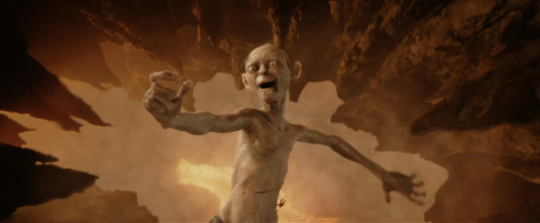
Shooting two versions gave us the option of either rotoscoping my performance or going back, sometimes up to a year later, to do the scene using motion capture. So on Rings, we would block the rehearsals and then we'd always shoot two passes of the same scene, one with me in the scene, and one where I'd step out of the frame and the other guys would play to an empty space where I was just off camera. In my mind it was always just a method of recording performance. And I've never, ever treated it in any other way. I was doing the voice and acting with the other guys as I would on any film project. I approached it the way that I would approach any role that would be onscreen or onstageI played it from assigning a psychology and physicality to the role. But I wasn't able to just turn up and do Gollum's voice on set. It was very much about the movement of the character. And it had been employed for some early tests on some of the characters for Lord of the Rings, but no one really knew what it was going to lead to.Īt the time, it was purely capturing motion and not emotion or performance.

It was very much a peripheral activity in the entertainment industry. It was being used in video games at that point, but there was still a sense that it didn't have much of a future. Motion capture had come out of the medical industrystudying joint-related illnesses and looking at knee and ankle movements for medical purposes.

When I first started, there was no real modus operandi of how it would work. You played Gollum, the first photo-realistic movie character created using performance capture, in The Lord of the Rings (2001).


 0 kommentar(er)
0 kommentar(er)
